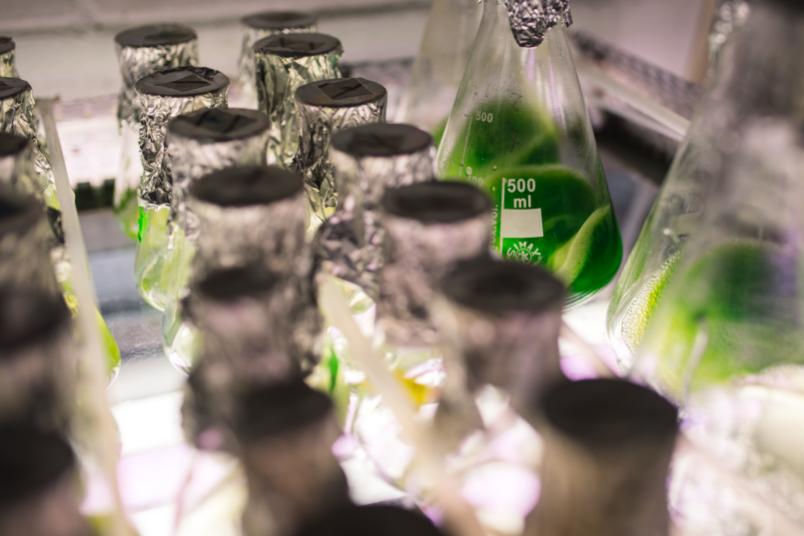
Hydrogen production Protein environment makes catalyst efficient
Biocatalysts are large protein molecules. The actual reaction takes place only at a small centrepiece. But the rest also plays a role.
The interaction of protein shell and active centre in hydrogen-producing enzymes is crucial for the efficiency of biocatalysts. A team from RUB and the Max Planck Institute for Chemical Energy Conversion in Mülheim an der Ruhr specifically analysed the role of hydrogen bonds in certain enzymes from green algae, the hydrogenases. The groups, which cooperate in the Excellence Cluster Resolv, reported the results in the renowned “Journal of the American Chemical Society”.
Most powerful biocatalysts
Hydrogenases produce hydrogen from electrons and protons. “They are among the most powerful biocatalysts ever”, explains Prof Dr Thomas Happe, head of the working group Photobiotechnology at RUB. The communication between the active centre of the enzyme and the protein environment plays a crucial role in this.

The Bochum-based group including doctoral student Oliver Lampret and the colleagues from Mülheim removed individual hydrogen bonds from special kinds of hydrogenases or added additional hydrogen bonds. Then they examined the effects. The manipulation changed both the electron transport properties of the enzyme and the catalytic direction in which it works, because hydrogenases can produce hydrogen and also facilitate the reverse reaction, that is, the cleavage of hydrogen.
Indications for the development of chemical catalysts
“The findings not only contribute to the understanding of this globally recognized biocatalyst group, but also give applied research important pointers for the development of chemical catalysts modelled on the highly active biomolecule”, says scientist Dr Martin Winkler from Bochum.